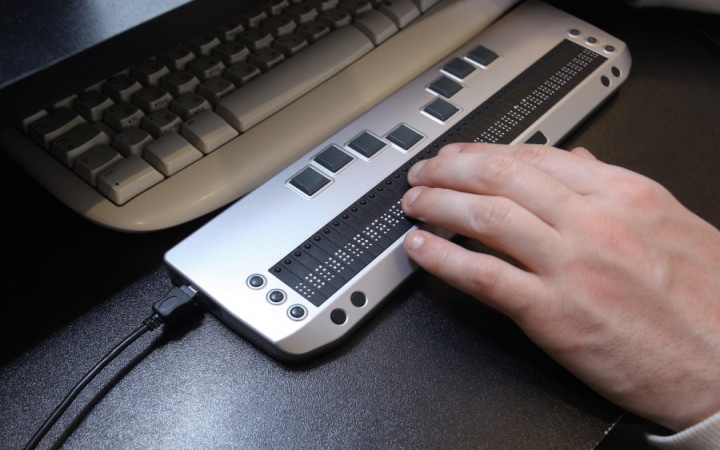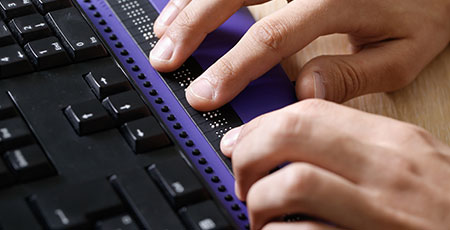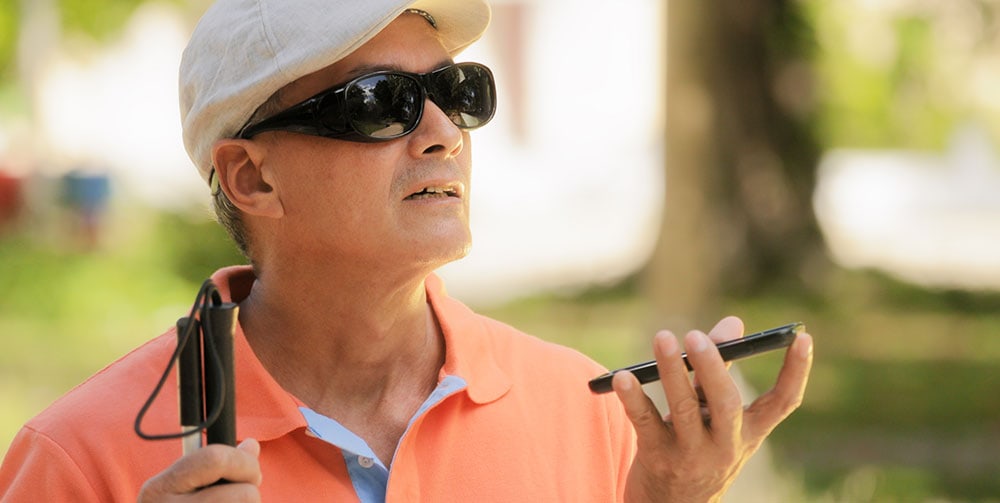Mobility Aids for Visually Impaired Users: Moving Through the World with Confidence
Mobility Aids for Visually Impaired Users: Moving Through the World with Confidence
Blog Article
Discover Innovative Tools Made for the Aesthetically Damaged
The advancement of ingenious tools for the aesthetically impaired represents a significant improvement in access and self-reliance. Technologies such as clever glasses with AI capabilities and mobile applications made to give auditory descriptions are improving everyday experiences for users. Furthermore, wearable tools that utilize haptic comments boost environmental recognition, while modern-day Braille innovations supply brand-new means to engage with message. As these devices proceed to progress, their influence on the lives of those with visual impairments raises essential concerns regarding the future of inclusivity and autonomy in different facets of life. What exists ahead in this technical landscape?
Smart Glasses for Navigation

Smart glasses developed for navigation are changing the way visually impaired people engage with their environment. These innovative tools utilize a mix of electronic camera modern technology, expert system, and auditory responses to give real-time information regarding environments. By utilizing barrier detection systems, smart glasses can signal individuals to potential threats, enabling safer mobility in both unknown and acquainted settings.
The assimilation of GPS technology additionally improves navigating capabilities, enabling customers to get acoustic directions as they move. This hands-free method not just promotes self-reliance yet likewise equips aesthetically damaged people to browse metropolitan landscapes with boosted confidence. In addition, several clever glasses are outfitted with attributes that identify sites and street signs, providing contextual information that improves the user experience.
Furthermore, the advancement of these devices is constantly progressing, with firms functioning to boost the accuracy of item acknowledgment and expand the variety of navigational functions. As smart glasses come to be a lot more economical and obtainable, they hold the possible to significantly change every day life for visually damaged individuals. Inevitably, these ingenious tools represent a vital step towards inclusivity, offering improved wheelchair and a higher feeling of autonomy for people browsing the world around them.

Mobile Apps for Daily Living
Just how can mobile applications enhance the every day lives of visually impaired individuals? Mobile applications are revolutionizing the method aesthetically damaged users navigate their atmospheres, manage day-to-day tasks, and access info. These applications supply vital assistance via various performances, fostering self-reliance and enhancing high quality of life.
Several ingenious mobile applications are made specifically for daily living. For instance, apps like Be My Eyes link aesthetically damaged individuals with sighted volunteers through video clip telephone calls, allowing them to receive real-time support with tasks such as reading tags or navigating unknown rooms. Likewise, Seeing AI, developed by Microsoft, utilizes artificial knowledge to explain surroundings, read text, and recognize things, efficiently transforming a smart device into an effective tool for everyday aid.
In addition, navigation apps customized for the aesthetically damaged, such as Aira and BlindSquare, use audio-based instructions and environmental info, enabling users to traverse their surroundings securely and with confidence. Beyond navigation and instant assistance, mobile applications additionally sustain company and job administration, with features that aid individuals establish reminders, produce to-do checklists, and track visits. In summary, mobile applications work as important sources, empowering visually damaged people to lead more independent and satisfying lives.
Wearable Technologies for Support
Empowerment with innovation is progressively noticeable in the world of wearable gadgets designed to aid visually impaired individuals. These innovative devices incorporate flawlessly right into every day life, improving navigating and giving important feedback to individuals. For example, smart glasses equipped with electronic cameras can read and acknowledge faces message aloud, permitting individuals to connect more confidently in expert and social setups.
One more noteworthy advancement is the use of haptic feedback systems in wearable devices. These systems use vibrations or other responsive signals to convey info about the customer's setting, such as challenges or modifications in surface, improving flexibility and safety. Wearable technologies likewise include wristbands that link to smart devices, signaling users to notifications with subtle vibrations, thus boosting connection without reliance on visual hints.
As these innovations remain to develop, they are not only improving independence for aesthetically impaired people yet likewise fostering a greater sense of addition in culture. By linking the space between challenges faced in daily living and my review here the potential for autonomy, wearable modern technologies work as pivotal devices in the pursuit for equal rights and empowerment for those with visual impairments.
Audio Description Tools
Sound summary tools play a vital role in boosting ease of access for aesthetically damaged people, providing them with the capacity to involve with aesthetic media. Speech-to-text devices for low vision. These devices supply narrated summaries of essential visual elements in films, tv programs, and live performances, making sure that individuals can totally comprehend the context and emotions communicated through visuals
Audio description can be incorporated into various platforms, consisting of streaming solutions, cinema testings, and live theater. Several popular streaming services now consist of audio summary as an accessibility attribute, permitting customers to choose it conveniently. Along with conventional media, specialized applications additionally exist, offering audio summaries for art events, galleries, and various other social events.
The performance of audio description rests on the skill of the storytellers, that have to share visual information succinctly without taking away from the initial sound. Innovations in this area are likewise leading the means for even more individualized experiences, where customers can adjust the level of detail and pacing according to their preferences.
Braille Innovations and Tools
Braille technologies and devices have dramatically transformed the means visually impaired people communicate with message and info. Modern improvements have actually led to the advancement of flexible tools that improve proficiency and independence amongst users.
Furthermore, mobile Braille notetakers incorporate conventional Braille input with modern capabilities, promoting note-taking, organizing, and document editing and enhancing on the move. Mobility aids for visually impaired users. These small gadgets typically feature text-to-speech capacities, connecting the space between Braille and acoustic information
In enhancement, innovative Braille printers have actually emerged, allowing users to generate Braille tags, my sources files, and educational materials efficiently. This ease of access cultivates higher involvement in expert and academic environments, inevitably promoting inclusivity.
Moreover, research study right into smart Braille technologies proceeds to broaden. Tools that integrate synthetic knowledge are being explored to supply real-time navigating help and contextual information, improving the user experience in diverse setups. On the whole, these innovations reflect a commitment to empowering aesthetically impaired people through modern technology, ensuring they can here are the findings easily accessibility and engage with the globe around them.

Verdict
The innovation of cutting-edge devices for the aesthetically impaired considerably enhances independence and high quality of life. These modern technologies not only foster higher addition however also advertise freedom in day-to-day tasks, ultimately contributing to a more accessible and equitable culture for visually damaged individuals.
As wise glasses end up being more budget-friendly and accessible, they hold the prospective to considerably transform daily life for aesthetically impaired users. Mobile apps are changing the method aesthetically impaired users navigate their settings, handle everyday tasks, and access info. Applications like Be My Eyes connect aesthetically damaged users with sighted volunteers using video phone calls, enabling them to receive real-time aid with tasks such as checking out tags or navigating strange rooms.In addition, navigation apps customized for the visually damaged, such as Aira and BlindSquare, supply audio-based directions and environmental info, enabling customers to traverse their surroundings safely and confidently.The improvement of innovative devices for the aesthetically impaired significantly enhances independence and high quality of life.
Report this page